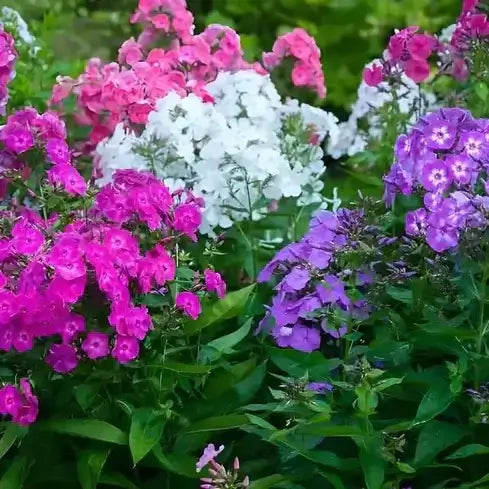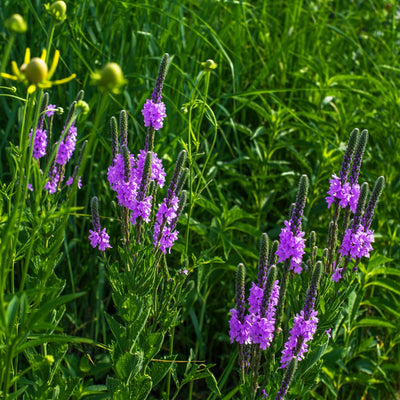Perennial flowers are a fixture each year and form the foundation of a garden
Perennials generally require minimal maintenance if they're placed in the right place! If they get too crowded yearly, some might require being "divided" either in the spring or fall. Perennial flowers should be planted in autumn or spring when temperatures are lower. It gives them time to settle and set their roots down.
When choosing perennials, make sure to think about your plant's zone. Also, consider shade/sun and watering requirements and grouping similar plants.
Find the time of bloom for each perennial to help you choose plants that will keep blooming throughout the year. Sketch your garden with higher-growing perennials in the back and smaller perennials in front. We will explore some tips for seasonal care of perennial plants in this article and suggest some perennials that are easy to plant and care for. So, keep reading!
Perennial Plant Care
The soil should not be excessively dry or moist. Avoid getting water on your foliage to prevent disease. Fertilize using low-nitrogen, high-phosphorus fertilizer to encourage more excellent blooms and less greenery. The majority of perennials only require a limited amount of fertilizer. A single application in the spring (after the soil is warmed) is typically enough.
Please get rid of flowers that are dead (deadhead) to stop plants from focusing their energy on producing seeds and to encourage the reblooming process. Veronica, Coreopsis, Phlox, and Delphinium can be rebloomers. Put support plants up at the start of the season before the plants grow too large so as not to disrupt their roots. Place the supports near the plant, and then carefully tie the stem around the support; for peonies that form clumps, utilize hoops.
It is important to water deeply, particularly during the beginning of the growing season. If you plant in the autumn, water the perennials frequently until the frost has set.
Take out the dead flowers (deadhead) to stop plants from wasting energy for seed production and encourage reblooming.
It would be best if you mulched around your plants to keep weeds to a minimum and to keep moisture in the soil.
Make a neat, tidy line between the lawn and the flower bed. Make use of an edging tool, or put up a permanent edge.
Winter Maintenance of Perennials
In areas where temperatures could drop particularly low, here's a method that allows tougher perennials, like alpines, to stay warm in their pots. The pots of many gardeners are covered with a material like microfoam or several layers of Remay. Spread an even blanket (about 6 inches [15 centimeters) of peat moss on the mantle. Then, add a layer over it. Cover all your perennials in a mulch of dry peat moss or compost if your ground is frozen.
Place some mulch over your perennial gardens while the ground is frozen until you've got many nights with temperatures above freezing. After removing the mulch, put it in the compost pile.
Blackberry Lily
The attraction to The appeal of Blackberry Lily Plant goes beyond its aesthetic appeal. This gorgeous plant has a rich and fascinating cultural background that adds a touch of interest to its appearance. In Chinese tradition, Blackberry lily plants are associated with luck, wealth, prosperity, and protection against evil spirits.
Approximately three feet tall, Blackberry Lily Plants have striking upright stems. Its narrow, sword-like leaves provide a stunning background for the show's main attraction: the beautiful flowers. From midsummer until early fall, The Blackberry Lily Plant boasts vibrant blooms that will make you stunned.
This stunning evergreen beauty makes a masterpiece that will delight your senses and add an elegant touch to any setting. With its beautiful flowers, gorgeous foliage, and intriguing cultural significance, it is a must-have Blackberry Lily Plant that is an essential addition to any garden lover.
Blue Vervain
Blue Vervain is a perennial flower gardener all over the United States adored for its casual appearance and capacity to thrive in hot, humid conditions.
The blue vervain can reach 6 feet tall. It is characterized by slim stems and small leaves which are pointed and toothed. The flowers are tiny and blue-violet. They are arranged in large spikes at high points on the plant.
The flowers bloom from mid-summer until the beginning of fall. Blue vervain is well-known for its medicinal properties and is utilized in traditional medicine. The herb has been used to treat depression, anxiety, and insomnia and induce relaxation. It can also treat menstrual cramps and other kinds of discomfort.
Dandelion Plant
Dandelions are usually regarded as plants that grow and infest the lawns and gardens. As a food source of minerals and vitamins, they are excellent for cooking or eating raw. The roots can be cooked and brewed into a coffee substitute. The flower petals can make wine or sprinkled on salads to add color.
A dandelion is a bright and lively yellow flower that blooms from the beginning of spring through the winter. The flowers bloom on a large, hollow stem. Flower heads of Tara vacuum are open during the day and close down at night.
The cheerful yellow flower develops from several tiny yellow petals, with only one seed inside the center. The taproot of the dandelion helps to stop soil compaction, a common issue that drains plants of water and vital nutrients. If the soil is compacted too much, water and nutrients will be pushed away from the plant instead of being soaked into it to absorb.
False Indigo
False Indigo thrives in full sun to light shade conditions. It favors well-drained soil but tolerates various soil types, such as sandy and clay. After it is established, the false Indigo can be very durable and withstand dry spells and extreme heat.
Pruning is unnecessary; however, removing flowers that have been sucked and trimming them in the early spring will help improve growth and shape. True Indigo has grown popular with gardeners and landscaping lovers with its beautiful flowers, foliage, and eco-friendly benefits.
False Indigo can be a versatile plant used in various ways. It's small size and attractive foliage complement formal and informal garden designs. It's a good border plant that adds color and the appearance of flower beds and mixed perennials. False Indigo may also be integrated into naturalized or wildlife gardens where its flowers draw beneficial insects. Additionally, its nitrogen-fixing ability benefits the ecosystem's overall health.


